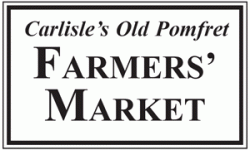The Special Collections library at Dickinson College has a collection of student papers from a 1901 Sociology class, which describe various aspects of Carlisle at that time. According to a paper by William H. Ames, Carlisle boasted the following industries:
Factories: 4 shoes, 2 carpets, 1 paper box, 1 wrapper and ladies wear, 4 candy, 6 cigars, 1 axle, 4 carriage, 3 harness, 1 ice
Works: 4 brick, 2 frog and switch, 2 marble, 1 chain, 2 pump
Mills: 2 silk, 1 planing, 2 flour, 4 bottling, 2 machine shops, 2 hide and leather finishing establishments, 3 lime kilns.
According to Ames, Carlisle also featured 3 banks (Carlisle Deposit Bank on North Hanover Street; Farmer’s Bank on West Main Street, and the Merchants National Bank on South Hanover Street); 10 hotels (including the Mansion House on Main and Pitt and the Wellington on East Main, now known as High Street); and 19 churches.
A paper by Dickinson student John Bieri cites the existence of several liveries in Carlisle, “the largest of which is owned by W.H. Bretz who has about 34 horses.” Bieri adds, “the carriages and cabs of these companies were probably used here before the introduction of the railroads, and they very likely will still be here after we are sailing to New York and London in air-ships.” Not exactly prescient.
The Masland Corporation probably qualifies as one of the oldest businesses in Carlisle. Answers.Com provides an encyclopedic history of the Masland Corporation at this site: http://www.answers.com/topic/masland-corporation?cat=biz-fin
According to the article, Masland started as a yarn dye business in 1866, but gradually 1 transitioned to carpet and car interior manufacturing.
,– C.C.

